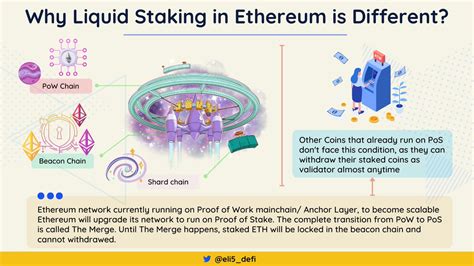“Mainnet Mining The future of cryptocurrency: a guide for Pow and Lido (Ldo)”
The world of cryptocurrency is quickly evolving, with new technologies that emerge every day. In the heart of this revolution are the mainnets, the mechanisms of consensus of proof of work (POW) and solutions of layer 1 such as Lido (LDO). In this article, we will deepen the details of these three crucial components, exploring how they work together to enable an safe, decentralized and accessible cryptocurrency ecosystem.
Mainnet: the traditional block chain
The main is the primary block chain network used for most cryptocurrencies. It is the infrastructure that allows peer transactions, data storage and execution of intelligent contracts. Mainnets are generally administered by centralized organizations or governments, which supervise the network and emit new currencies to users.
In traditional blockchains such as Bitcoin (BTC) and Ethereum (ETH), miners use powerful computers to solve complex mathematical puzzles, called “HASH functions”, to validate transactions and create new blocks. This process is known as work test (Pow). Miners are rewarded with freshly minted coins or transaction rates for their efforts.
Pow: The Mining Enigma Hungry for Energy
One of the most significant challenges facing cryptocurrency is energy consumption. Traditional Pow consensus mechanisms require massive amounts of computational power to solve complex puzzles, which in turn requires a huge amount of energy. This has led to growing concern for the environmental impact of cryptocurrency mining.
To mitigate this problem, some alternative consensus algorithms have been developed, which include:
- Take test (POS) : In Post, the validators are chosen according to their property of a specific number of currencies, instead of solving mathematical riddles. This reduces energy consumption and allows more efficient use of resources.
- Layer 1 : Capa 1 solutions such as Lido (LDO) aim to simplify the mining process by providing access to high performance computer resources and optimizing block creation times.
Lido: a decentralized post solution
Lido is a decentralized layer 1 solution that provides a more efficient and efficient form of energy to extract cryptocurrencies. By grouping the computational power of multiple nodes, Lido allows miners to validate transactions in parallel, reducing energy consumption and increasing the general capacity of the main network.
Lido’s architecture consists of several key components:
- Group of nodes : A large set of decentralized nodes that work together to validate transactions.
- Smart Contract Manager : A platform that manages node interactions, transaction routing and data storage.
- HASH FUNCTIONS

: Lido uses personalized hash functions adapted to the specific cryptocurrency that is extracted.
Benefits and advantages
Lido (LDO) offers several benefits on traditional Pow consensus mechanisms:
- Energy efficiency : Decentralized Lido architecture reduces energy consumption, which makes it a more ecological option.
- Scalability : Lido allows faster block creation times, increasing the general capacity of the Nent and allowing more transactions per second.
- SECURITY : The architecture of the pool of Lido nodes provides robust security through multiple protective layers.
Conclusion
The world of cryptocurrency is quickly evolving, with new technologies that emerge every day. While traditional Pow consensus mechanisms such as Bitcoin (BTC) have their strengths, decentralized solutions such as Lido (LDO) offer a more efficient and scalable alternative. As the cryptocurrency ecosystem continues to grow and evolve, it is essential to consider innovative solutions such as Lido that prioritize environmental sustainability and user experience.
Leave a Reply